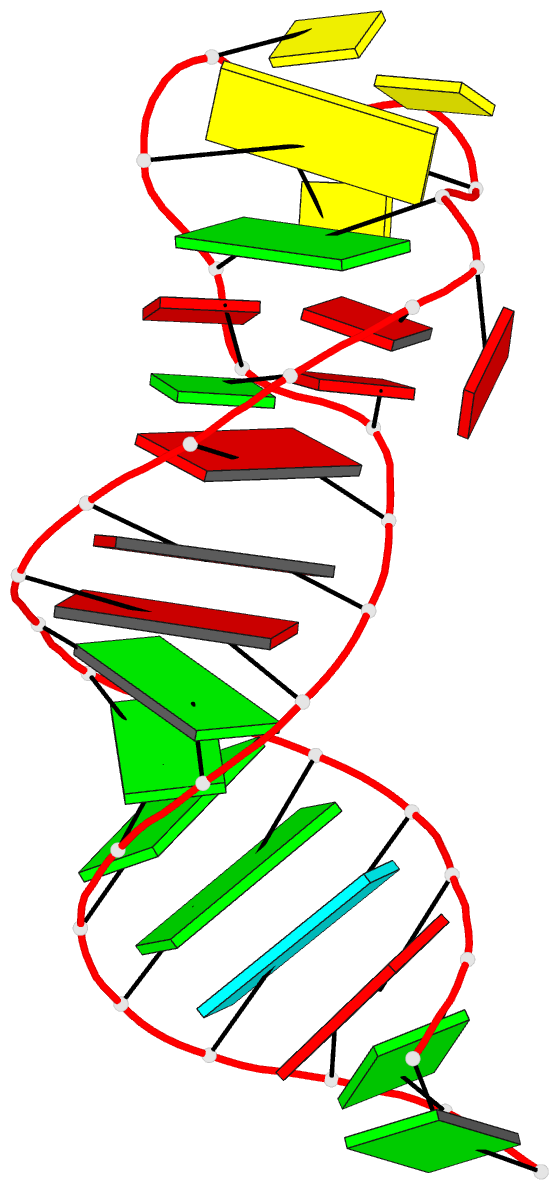Summary information and primary citation
- PDB-id
- 2jtp; DSSR-derived features in text and JSON formats
- Class
- RNA
- Method
- NMR
- Summary
- Solution structure of the frameshift-inducing RNA stem-loop in siv
- Reference
- Marcheschi RJ, Staple DW, Butcher SE (2007): "Programmed Ribosomal Frameshifting in SIV Is Induced by a Highly Structured RNA Stem-Loop." J.Mol.Biol., 373, 652-663. doi: 10.1016/j.jmb.2007.08.033.
- Abstract
- Simian immunodeficiency virus (SIV), like its human homologues (HIV-1, HIV-2), requires a -1 translational frameshift event to properly synthesize all of the proteins required for viral replication. The frameshift mechanism is dependent upon a seven-nucleotide slippery sequence and a downstream RNA structure. In SIV, the downstream RNA structure has been proposed to be either a stem-loop or a pseudoknot. Here, we report the functional, structural and thermodynamic characterization of the SIV frameshift site RNA. Translational frameshift assays indicate that a stem-loop structure is sufficient to promote efficient frameshifting in vitro. NMR and thermodynamic studies of SIV RNA constructs of varying length further support the absence of any pseudoknot interaction and indicate the presence of a stable stem-loop structure. We determined the structure of the SIV frameshift-inducing RNA by NMR. The structure reveals a highly ordered 12 nucleotide loop containing a sheared G-A pair, cross-strand adenine stacking, two G-C base-pairs, and a novel CCC triloop turn. The loop structure and its high thermostability preclude pseudoknot formation. Sequence conservation and modeling studies suggest that HIV-2 RNA forms the same structure. We conclude that, like the main sub-groups of HIV-1, SIV and HIV-2 utilize stable stem-loop structures to function as a thermodynamic barrier to translation, thereby inducing ribosomal pausing and frameshifting.





